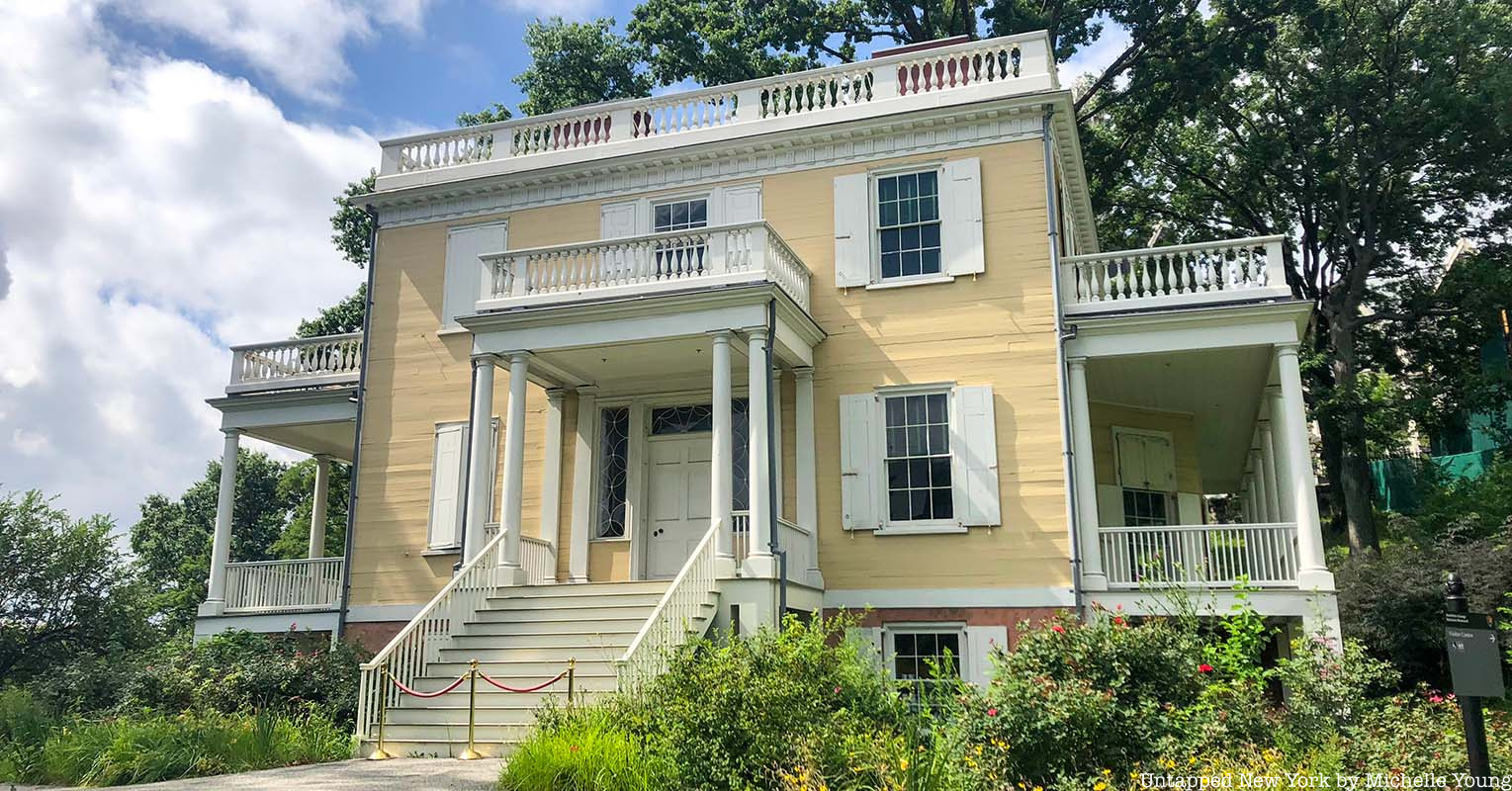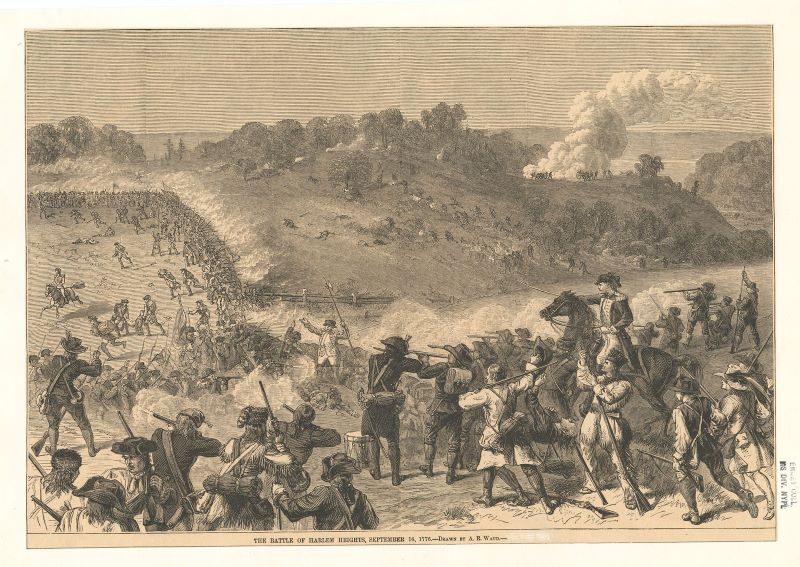For two and a half centuries, New York City’s pivotal role in Revolutionary War history has been underappreciated. Even most New Yorkers aren’t aware of the conflicts that took place where we walk today. The Battle of Harlem Heights happened in the middle of the period from August 27th to November 16th, 1776 when New York, from Gravesend (Brooklyn) to Pelham (The Bronx), was a battleground and the center of the conflict. Some say it changed the course of the war.
On August 27, 1776, British troops under General William Howe defeated the Americans at the Battle of Long Island, fought in present-day Brooklyn. The Americans were pinned down at Brooklyn Heights, and two days later, Continental Army Commander-in-Chief George Washington evacuated his 9,000-man army to Manhattan. On September 15, Howe led his army to Kip’s Bay, leading to a bombardment of American positions on the shore and their eventual fleeing further north. By nighttime, Washington led his troops along the west of Manhattan up to Harlem Heights, which more accurately responds to present-day Morningside Heights and parts of Harlem.
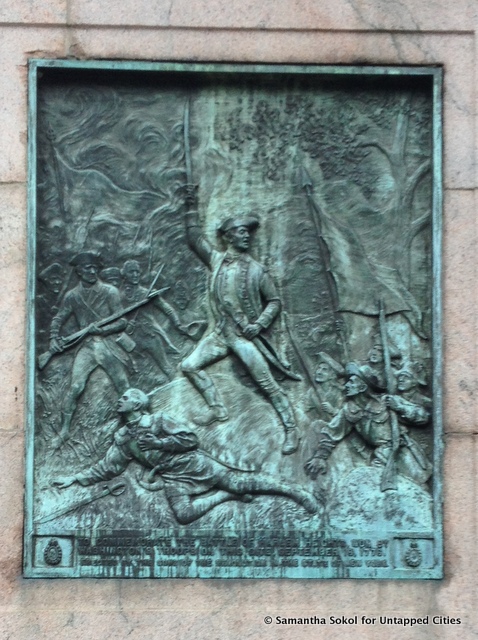
The next day, Washington received unfounded reports that the British were advancing northwards. Lieutenant Colonel Thomas Knowlton led about 150 men to scout out British lines, but the troops were later spotted by British soldiers. A skirmish broke out for about half an hour in the woods, and Knowlton quickly retreated his troops since his 150 men could not defeat the much larger British troops. The British followed, noticing Knowlton’s troops entering an opening that overlooked Hollow Way, which signified the forward edge of Washington’s position. The British likely ordered reinforcements of 42nd Highlanders and the 2nd and 3rd Infantry Battalions around this time.
Washington, after hearing the news from Adjutant General Colonel Joseph Reed, came up with a witty plan: Send troops forward to make a diversionary attack to draw the British to Hollow Way, then have another detachment cut the British off from another direction. The diversionary attack was led by 150 men, who engaged with the British and led them down, and another 900 men joined the American forces, though little happened since the Americans and British were so far away.
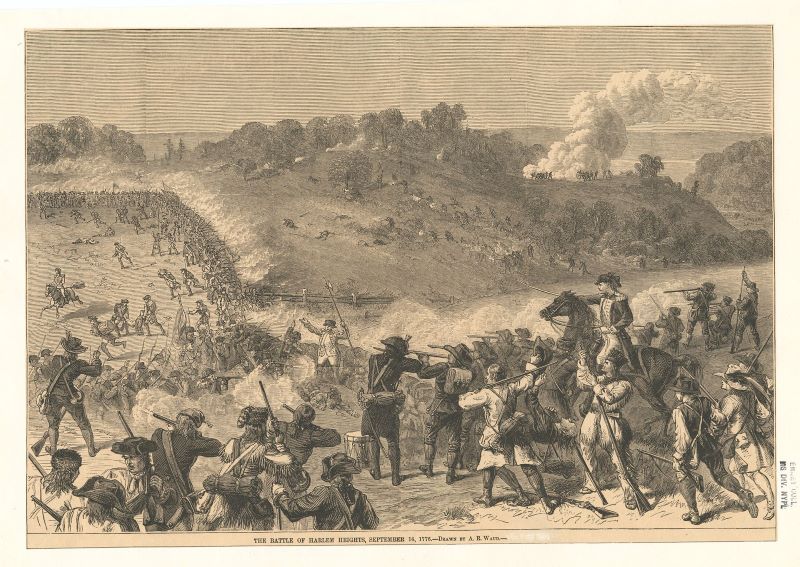
The flanking party, known as Knowlton’s Rangers, totaled about 200 men. Though, the group may have been misdirected, turning right too early, and could not catch the British in the rear. Ultimately, Knowlton perished in battle, as well as Major Andrew Leitch. Washington, though, kept fighting, sending reinforcements to Hollow Way as the British retreated uphill. The British received reinforcements in an open buckwheat field, about the location of present-day Barnard College. Washington allowed his troops to engage in direct attack with the British, totaling about 1,800 Americans and slightly fewer British. Nathanael Greene, one of Washington’s most dependable officers and namesake of Fort Greene, was also sent in to direct troops.
After nearly two hours, the British began to withdraw, the Americans continuing to press forward until Washington ordered them to halt. Fourteen British soldiers were killed, according to Howe, though this number may have been up to nearly 100. The battle is often considered the first success of the Revolutionary War under Washington’s command, greatly boosting American morale. Though fighting stopped for about a month, Washington’s troops would soon be defeated at the Battle of White Plains, leading them to retreat to New Jersey and then Pennsylvania.
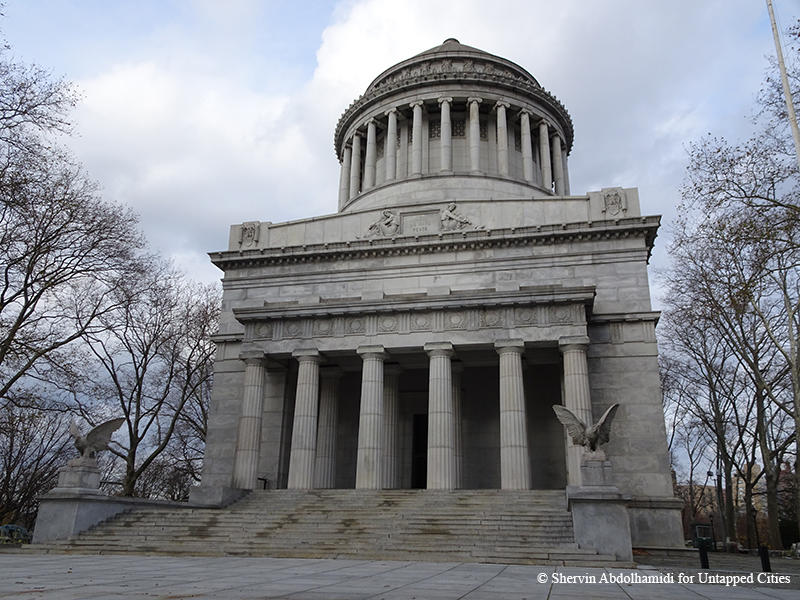
On April 23 at 11 a.m., follow in the footsteps of George Washington and Alexander Hamilton on this Battle of Harlem Heights walking tour that will take you on a vigorous march up and down the hills of Hamilton and Morningside Heights. Harlem resident and Revolutionary War buff Mark Satlof will set the scene for this battle and guide you across its mile-plus field of action. Learn about the tumultuous events and bloody conflicts that led to this day of head-to-head fighting in a buckwheat field in September 1776, and the battles and skirmishes that made the NYC area a battleground through 1781. Experience for yourself on this hilly, mile and a half journey how the topography and geography of New York shaped the arc of the campaign of 1776 in and around the city, focusing on the Battle of Harlem Heights. See some of the other historic sites on the two Heights including Hamilton Grange, City College, Columbia University, and Grant’s Tomb. This event is free for Untapped New York Insiders. If you’re not an insider, become a member now (the code JOINUS to get one month free).
Next, check out 11 Revolutionary War Sites Across NYC!






